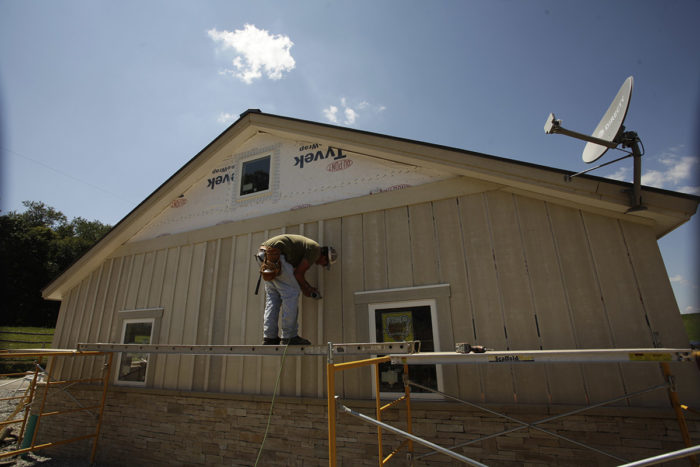Takeaways After Trying Out a New Siding and Trim Material
A remodeler’s thoughts on working with TruExterior fly-ash siding and trim.
TruExterior trim and siding material is made of fly ash, a byproduct of burning coal, along with a proprietary blend of polymers. According to the manufacturer, it is nearly impervious to moisture and termites, and is suitable for ground and masonry contact. What that means, essentially, is that many of the accommodations that builders make to keep wood siding safe from rot—such as leaving gaps where the siding runs into rooflines or horizontal surfaces—don’t apply to this product. If it does what they say it does, there’s a lot to like. Time will tell.
Unlike fiber cement, you can cut and shape this material just like wood using standard carpentry tools. You’ll want to dedicate blades to this material, though. In my experience, those blades won’t be any good for cutting wood again. TruExterior recommends using dedicated carbide-tipped blades.
The material isn’t very stiff, and we usually like to have two guys carry it as it snaps much easier than wood. Because of its flex, I’d be reluctant to use it over the ventilated rainscreen setup I typically use with wood board and batten; I’m not sure it would lie flat over the long haul.

TruExterior trim comes factory primed, and has a flat surface on one side and a wood-grain pattern on the other. Unlike wood, you don’t need to prime or seal end cuts. You will, however, have to paint it to maintain your warranty. It seems to take paint fine. TruExterior says to use a high-grade exterior paint, and there are no restrictions on color. My rep said you can paint it black if you want, and it won’t get hot and expand like some products. You don’t need to use adhesives with the product, but if you do want to caulk it, TruExterior recommends using exterior-grade acrylic caulks and adhesives before you paint.
It’s worth mentioning that this board-and-batten job was done using trim material, and cladding a house entirely in trim is expensive. The 16-ft.-long 1×12 TruExterior boards used on this project cost $82 apiece from my local supplier. The 16-ft. 1×3 material used for battens costs $22 each. This is relatively close in price to trim made of PVC, fiber cement, and other engineered or composite materials, but all of these materials cost a lot more than the rough-cut lumber we usually use for board-and-batten siding.
Andrew Grace is a remodeler and owner of Grace Construction based in Ligonier, Pa. To see more from Andrew about creating board-and-batten siding out of both wood and new materials, check out “Better Board and Batten,” in FHB #272.






View Comments
Informative. My friend consulted pest exterminator in Sacramento when she bought in the wood material in. The exterminators helped her with the techniques that were very helpful for the long period of time and kept termites out. Visit http://pinnaclepest.com/termite-control/ for more info!!
What about respirable silica dust?